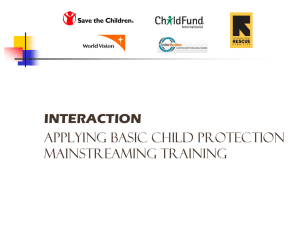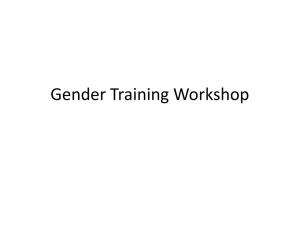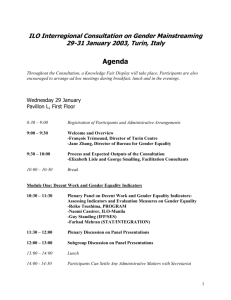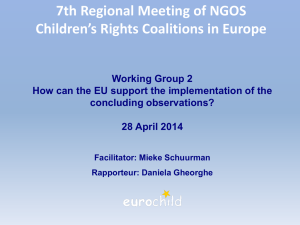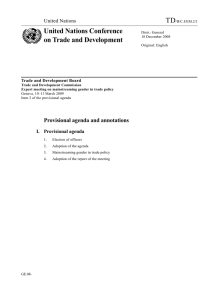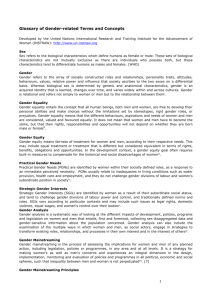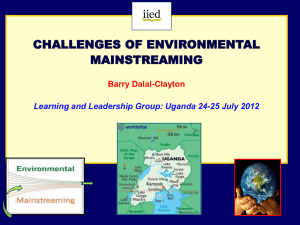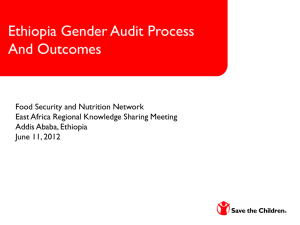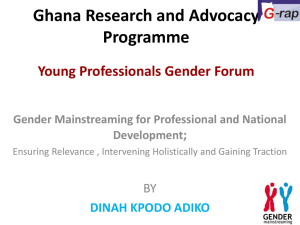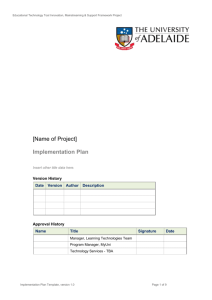ECU: June 2001 - View from the Top
advertisement
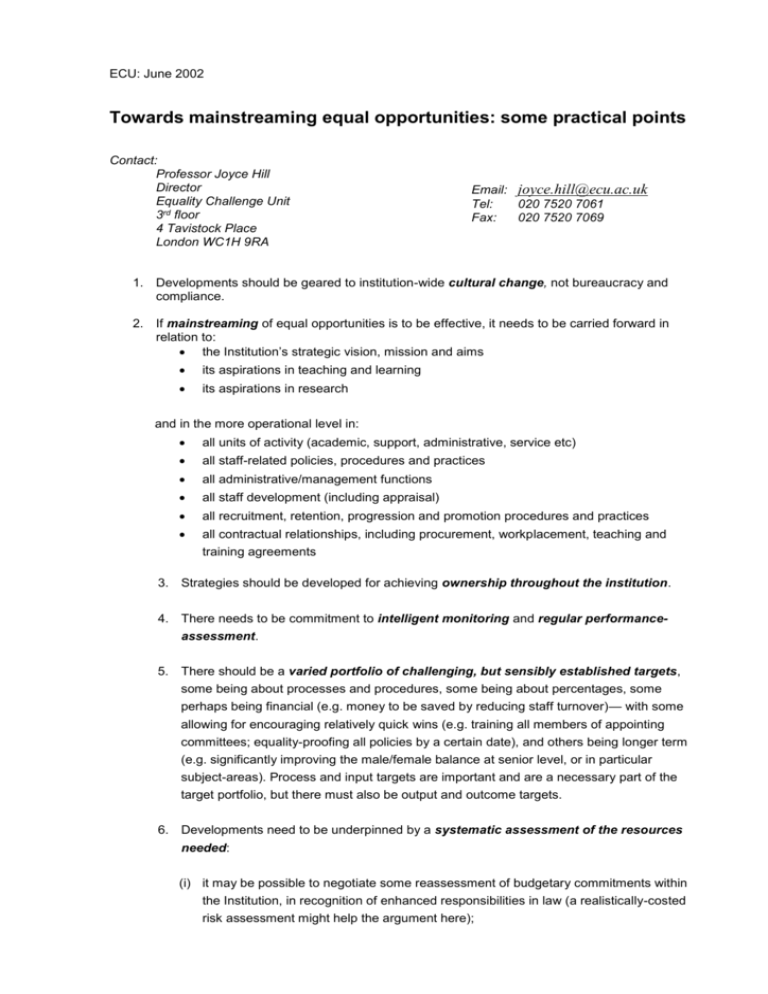
ECU: June 2002 Towards mainstreaming equal opportunities: some practical points Contact: Professor Joyce Hill Director Equality Challenge Unit 3rd floor 4 Tavistock Place London WC1H 9RA Email: joyce.hill@ecu.ac.uk Tel: 020 7520 7061 Fax: 020 7520 7069 1. Developments should be geared to institution-wide cultural change, not bureaucracy and compliance. 2. If mainstreaming of equal opportunities is to be effective, it needs to be carried forward in relation to: the Institution’s strategic vision, mission and aims its aspirations in teaching and learning its aspirations in research and in the more operational level in: all units of activity (academic, support, administrative, service etc) all staff-related policies, procedures and practices all administrative/management functions all staff development (including appraisal) all recruitment, retention, progression and promotion procedures and practices all contractual relationships, including procurement, workplacement, teaching and training agreements 3. Strategies should be developed for achieving ownership throughout the institution. 4. There needs to be commitment to intelligent monitoring and regular performanceassessment. 5. There should be a varied portfolio of challenging, but sensibly established targets, some being about processes and procedures, some being about percentages, some perhaps being financial (e.g. money to be saved by reducing staff turnover)— with some allowing for encouraging relatively quick wins (e.g. training all members of appointing committees; equality-proofing all policies by a certain date), and others being longer term (e.g. significantly improving the male/female balance at senior level, or in particular subject-areas). Process and input targets are important and are a necessary part of the target portfolio, but there must also be output and outcome targets. 6. Developments need to be underpinned by a systematic assessment of the resources needed: (i) it may be possible to negotiate some reassessment of budgetary commitments within the Institution, in recognition of enhanced responsibilities in law (a realistically-costed risk assessment might help the argument here); Equality Challenge Unit 2 Towards mainstreaming equal opportunities: some practical points (ii) the exploitation of existing resources to enhance the HR performance of the Institution (e.g. re-prioritising certain aspects of staff development activity within the existing staff development budget; building HR requirements for evidence into the management information systems). 7. A staff development and training programme for different roles and responsibilities needs to be set up, with mandatory participation being confirmed or introduced. 8. Work in mainstreaming the requirements of the RRAA in particular and equality and diversity in general should address all categories, grades and contractual types of staff with equal seriousness and commitment. 9. Whilst the developments should not be solely driven by legal requirements, there should be a lively responsiveness to legal requirements and EU directives, actual and impending. 10. The only workable framework for mainstreaming is a holistic approach — not a sequential one in which different pieces of legislation are treated as separate activities. 11. There needs to be clear sense of where responsibilities lie within the organisation, and how the exercise of these responsibilities can be made most effective. 12. Policies and Action Plans, which will be reported on annually under the terms of the RRAA, will need to have a strong practical focus: what is to be done, how it is to be done, why it is to be done, and how outcomes will be assessed. 13. Reporting and review needs to be systematic, set within with the HEI’s mainstreamed timescale, and articulated in terms of change and development. 14. Communication should be a prominent feature of planning and practice: communication of the commitment by key players at the top and in the operational areas, and practical communication through sundry media to staff (and students) within the organisation. 15. Systematic consultation with all types and categories of staff (and students) needs to be established. (see the requirements of the RRAA as a model.) 16. In particular, Institutions can approach the RRAA as a catalyst, which identifies, through its General and Specific Duties, good practice across the full range of HR management. The Act’s requirements for a pro-active approach, monitoring, performance review, and publication can be used as a lever for institutional change, applicable across all areas of activity, not just those relating to ethnicity and racial groups.
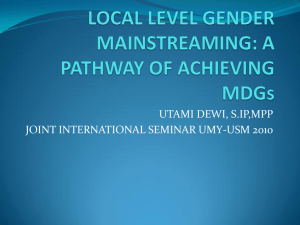
![Gender mainstreaming in higher education [PPTX 1.25MB]](http://s3.studylib.net/store/data/009261055_1-dfa19b70fcd91637c7a1dbd1bc939bd3-300x300.png)
